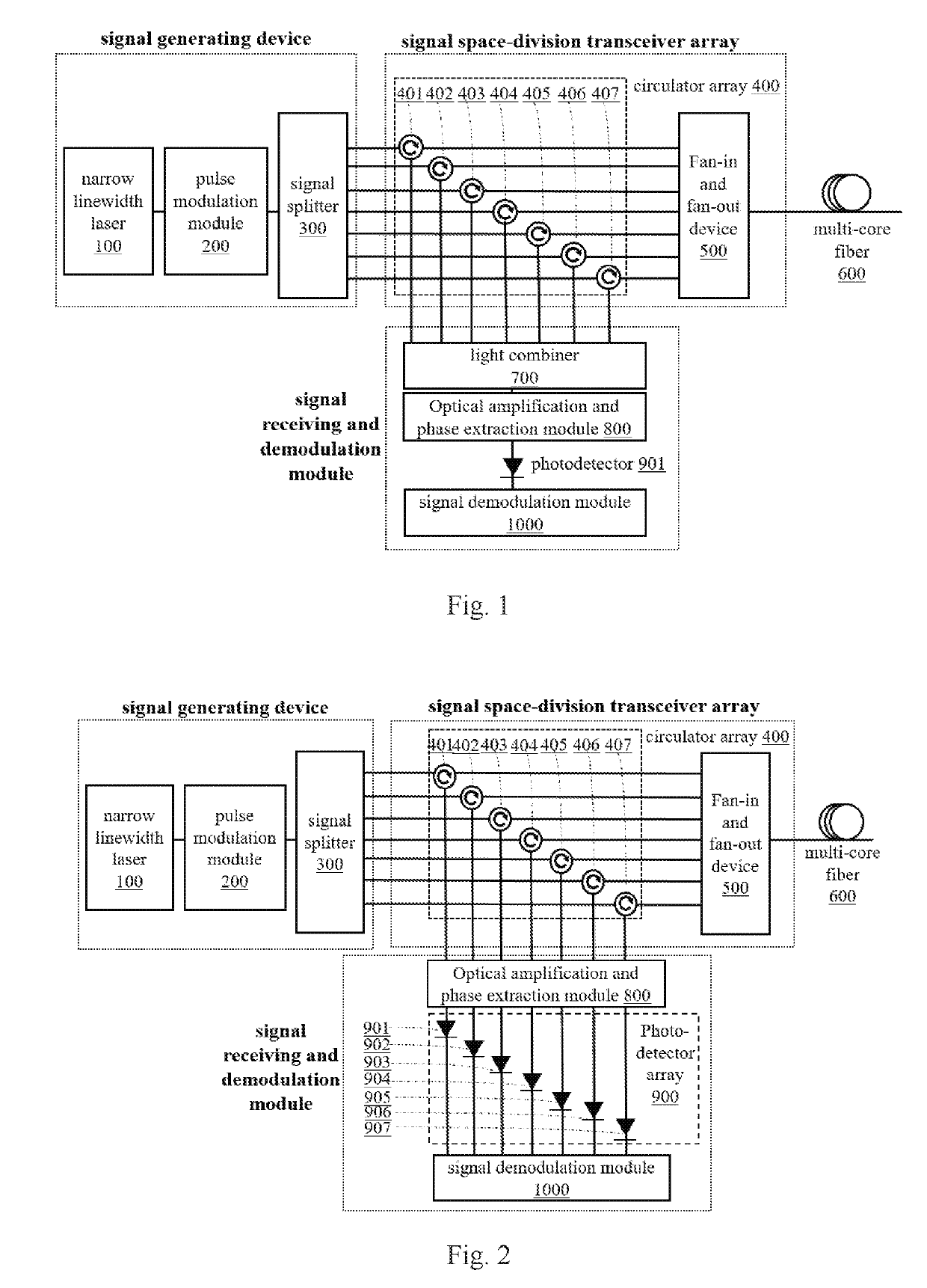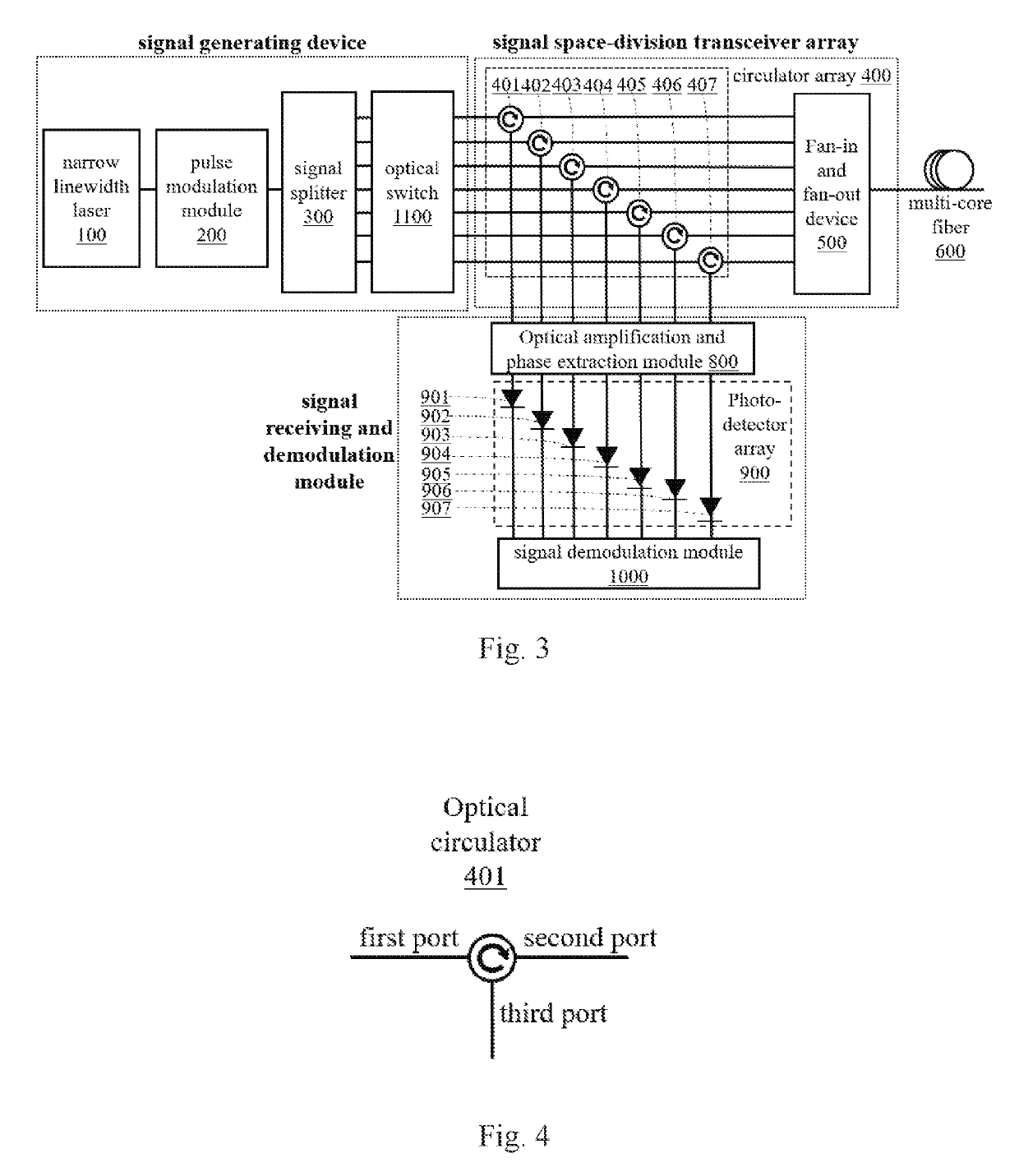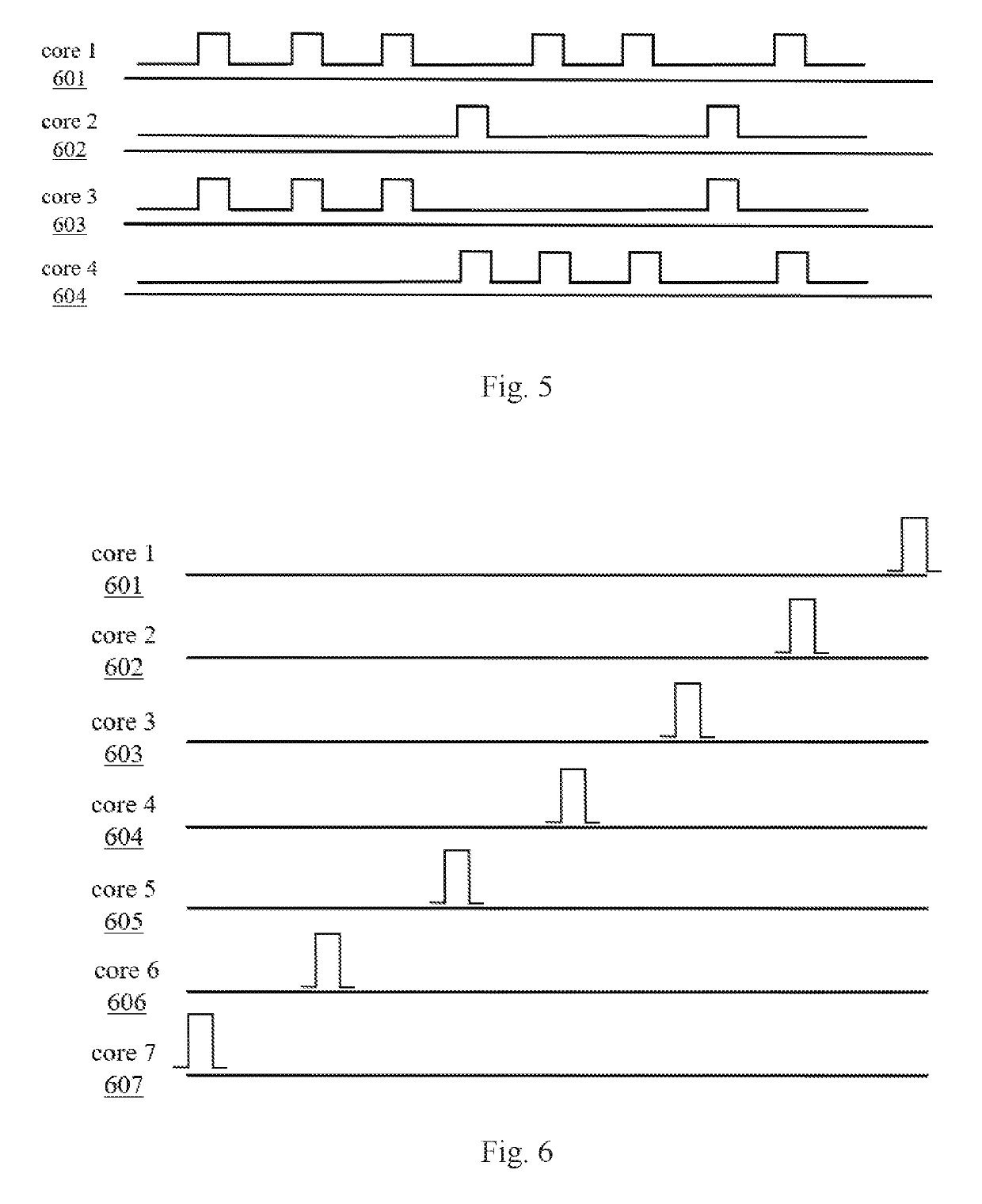Distributed acoustic sensing system based on space-division multiplexing with multi-core fiber
a distributed acoustic sensing and multi-core technology, applied in multiplex communication, optical detection, instruments, etc., can solve the problems of low intensity of rayleigh backscattering light, standard optical fiber will reach its capacity limit, and das systems with standard single-core optical fiber still have two problems, so as to improve the overall optical signal-to-noise ratio (osnr) of the das system, accurately delay the response time of each core, and improve the strain resolution of the das system
- Summary
- Abstract
- Description
- Claims
- Application Information
AI Technical Summary
Benefits of technology
Problems solved by technology
Method used
Image
Examples
embodiment 1
[0041]The external acoustic signal can locally change the length and the refractive index of the FUT, thereby the phase modulation within the Rayleigh backscattering light is induced by the probing pulse; the DAS system can locate and quantify the external acoustic signal by demodulating the phase change of the Rayleigh backscattering light.
[0042]Normally, the intensity of the Rayleigh backscattering light is very weak, which makes the OSNR of the DAS systems low, so that it greatly limits the strain resolution of the DAS system. Increasing the width and the power of probe pulses both contribute to the intensity improvement of the Rayleigh backscattering light. However, since the spatial resolution of the DAS system is determined by the width of the probe pulses, the pulse width increment is limited by the practical needs. In addition, the peak power of probe pulses is limited by the nonlinear effect threshold of the FUT. Specifically, it is limited by the stimulated Brillouin scatt...
embodiment 2
[0053]Referring to FIG. 2, based on the embodiment 1, the embodiment 2 uses digital signal accumulation to improve the signal intensity of the DAS system. Different from the embodiment 1: the signal space-division transceiver array comprises a circulator array 400, and a fan-in and fan-out device 500. The multi-line pulse coding sequences output from the signal generating device transmit into the second ports of the circulator arrays from the first ports, and then are input into the MCF 600 through the fan-in and fan-out device 500. The signal receiving and demodulating device comprises an optical amplification and phase extraction module 800, a photodetector array 900 and a signal demodulation module 1000. The Rayleigh backscattering light within each core of the MCF 600 is output from the fan-in and fan-out device 500 through the third ports of the circulator array 400, and then sequentially transmits into the optical amplification and phase extraction module 800, the photodetecto...
embodiment 3
[0055]Referring to FIG. 3, based on the embodiment 2 combined with optical pulse coding, a DAS system is different from the embodiment 2 in that: the signal generating device comprises a narrow linewidth laser 100, a pulse modulation module 200 modulating continuous pulse sequences, a signal splitter 300, and an optical switch 1100. They are connected in sequence. The optical switch 1100 simultaneously outputs different pulse coding sequences into M channels, where MA is the core number of the MCF 600. The signal space-division transceiver array comprises a circulator array 400, and a fan-in and fan-out device 500. The multi-line pulse coding sequences output from the signal generating device transmit into the second ports from the first ports of the circulator array 400, and then are input to the MCF 600 through the fan-in and fan-out device 500 for transmission. The signal receiving and demodulating device comprises an optical amplification and phase extraction module 800, a photo...
PUM
 Login to View More
Login to View More Abstract
Description
Claims
Application Information
 Login to View More
Login to View More - R&D
- Intellectual Property
- Life Sciences
- Materials
- Tech Scout
- Unparalleled Data Quality
- Higher Quality Content
- 60% Fewer Hallucinations
Browse by: Latest US Patents, China's latest patents, Technical Efficacy Thesaurus, Application Domain, Technology Topic, Popular Technical Reports.
© 2025 PatSnap. All rights reserved.Legal|Privacy policy|Modern Slavery Act Transparency Statement|Sitemap|About US| Contact US: help@patsnap.com



